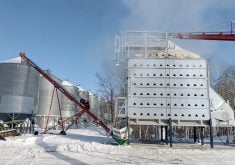When Gordon Hutton read the Nov. 8 and Dec. 6 Western Producer stories on Graeme Sait’s alternative nutrition farming concept, he questioned whether humic acid can really replace nitrogen fertilizer.
Hutton, formerly a forage specialist at Airdrie Alta., sent an email to Ross McKenzie, a retired Alberta Agriculture research agronomist. Hutton wanted to know if something that seems too good to be true really is too good to be true.
Further to my comments/question yesterday on this humic acid treatment, I have attached an article from The Western Producer (Nov. 8) about a farmer near Regina who feels the addition of this product has reduced nitrogen requirements by about 50 percent and still maintains crop yields in his organic system. No mention of economics versus previous input system so hard to know if it is any advantage economically.
Read Also

House ag committee to undertake several studies
The House of Commons standing agriculture committee has set its agenda for the coming months. Members began the fall sitting with a two-hour update on international trade
Any thoughts on how the acid application would drop nitrogen requirements? I’m guessing it must accelerate the breakdown of existing soil organic matter to free up nutrients, which would not seem to be sustainable in the longer term. I was wondering how the individual in the article could have achieved such large reductions in nitrogen requirements with the addition of humic acid.
An article on the mechanism of how this process works, organic to inorganic, would be helpful in clarifying where the nitrogen is coming from so other producers will have a better idea of what they need to assess before investing in this approach to fertility management. Always something coming along that seems to provide the perfect solution.
Thanks,
Gordon Hutton
There is very little scientific evidence that application of humic acid to soil will reduce the need for nitrogen fertilizer. Numerous other great claims are made for humic acid, such as increased availability of soil phosphorus and micronutrients, but they are not substantiated in the scientific literature.
The farmer in the article reduces nitrogen fertilizer by 50 percent. The actual nitrogen rates used were not mentioned in the article. How did the farmer know what yield losses or gains occurred without doing replicated field test strips with and without humic acid, also with and without nitrogen fertilizer?
This farmer is in the black soil zone near Regina. Soil organic matter levels would likely be in the range of six to 10 percent. Well-managed black soil with eight percent organic matter would have a nitrogen mineralization potential in the range of 60 to 80 pounds of nitrogen per acre each year. If nitrogen fertilizer is applied at half rate coupled with a rate of mineralization of 60-plus lb. of nitrogen per acre, this would mask a serious nitrogen deficiency.
The farmer may have been lacking nitrogen to achieve optimum yield but would still achieve a decent yield in the first year of using humic acid. If you under-fertilize repeatedly for a number of years, soil organic matter and soil mineralization potential will gradually decline, resulting in a less fertile soil and reduced crop yields. This is a brief explanation of my thoughts.
Thanks
Ross McKenzie
Humic acids are fully decomposed remains of ancient plants and animals. These long-chain molecules are high in weight and dark brown. It is a wide term referring to complex mixtures of different acids in alkaline solutions found in soils, oceans and streams.
When plants and animals die, their fresh molecules become available for other bacteria, fungi, protozoa, earthworms and even insects to consume. When the decaying matter has been eaten and transformed through several cycles, the remaining sturdy material that resists further decomposition is called humus. This is called humification.
Humus consists of humic acid, fulvic acid, and humin. Humic and fulvic acids are vital because of their role in transferring nutrients between the soil and plants.
Most humic acid today comes from rich, ancient humus deposits formed when plants and animals died in wetland environments. These massive beds of decaying material were covered by sand and rock formations and compressed into even richer deposits. Some deposits were then uplifted, and oxygen was reintroduced to the material. Oxygen aids the formation of humic acids. These uplifted deposits are mined near the surface, and are often referred to as either lignite or leonardite. Although they are considered a low-product, technically known as a low rank brown coal between peat and sub-bituminous, some lignite deposits contain up to 90 percent humic acid.
Soils high in organic matter already have high levels of humic acid. Humic acid is an important chelator, breaking down organics into inorganics that are more available to plants, thus increasing the availability of nutrients already in your soil.
Humic acids transport nutrients from the soil to the plant by holding onto ionized nutrients, preventing them from leaching away. Humic acids are attracted to the depletion zone immediately surrounding the plant root. The depletion zone is the area from which the root draws nutrients. This zone becomes depleted if there’s a lack of humic acid or mycorrhizal fungus.
When plants are mycorrhizal, the depletion zone is of less importance. Mycorrhizae have hyphae micro-tubes extending much further into the soil than the host plant can reach. They can gather mineral nutrition for the benefit of the host plant from outside the depletion zone. Humus is even more critical for plant nutrient availability and uptake if there aren’t healthy mycorrhizal relationships in the soil.

















